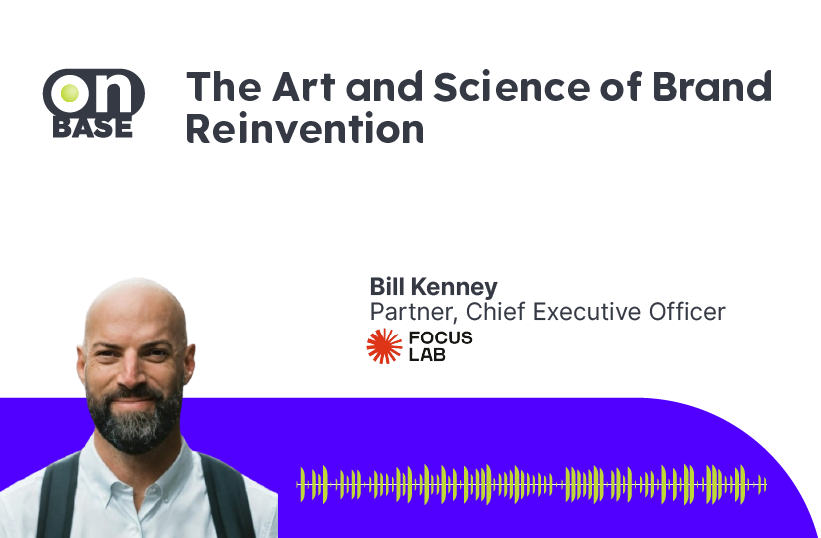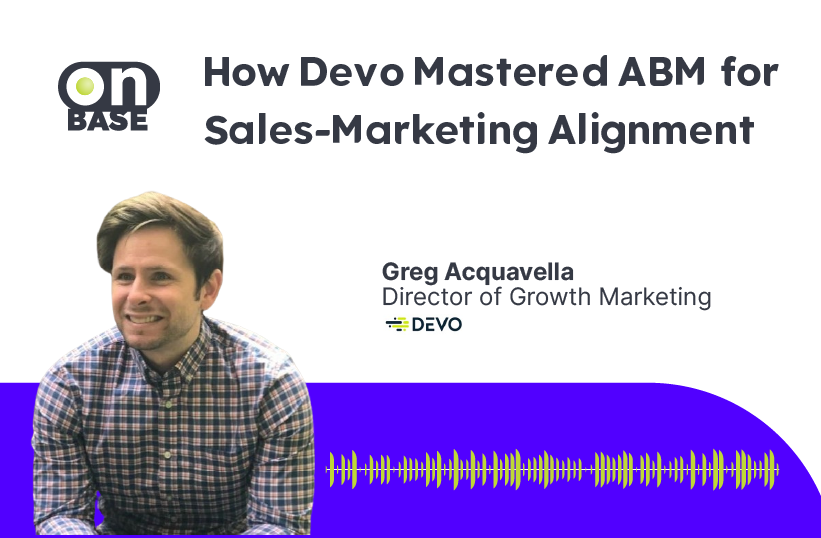
Building a Content Marketing Organization
Shownotes
In this Sunny Side Up episode, Join Chris Allen and Jon Miller as they discuss building a content marketing organization that focuses on revenue marketing and meaningful content. Chris outlines four key players: governance, strategy, execution, and analysis. He discusses roles and responsibilities and the importance of a corporate narrative, leveraging technology to measure results, and staying up to date on trends. Chris also shares tips for maximizing reach and engagement on social media platforms and becoming a revenue center. Tune in for this insightful conversation about building a successful content marketing organization!
About the Guest
Chris is the SVP of Marketing at Heartland, a people-centric fintech company serving over 1 million entrepreneurs today. He has a decade of executive leadership in marketing at other B2B tech and SaaS companies. Prior to Heartland, Chris led two Point of Sale technology companies as a small business entrepreneur. Then, moving into a more corporate role, his career took off in 2014, by being a part of the $2B acquisition of Silver Lake-backed Mercury Payments by Vantiv (now Worldpay by FIS). He specializes in revenue marketing powered by content in highly matrixed organizations.
Key Takeaways
- Content marketing has changed from carefully crafted blog posts to more of a “throw it up and see what sticks” approach.
- Content marketers can now fail faster, by trying out smaller pieces of content and seeing how they resonate.
- The goal is to find the right mix of content that resonates with potential buyers.
- The two biggest things to consider when budgeting are headcount and paid media budget.
- Staying up to date on trends and technologies is best done by staying connected with a network of marketing professionals.
Quotes
“I think that centering your organization around great content with some great themes and a great way to organize it, it’s a huge part of the marketing organization. It’s just not every part of the marketing organization.
– Chris Allen
Highlights from the Episode
Can you explain what you mean when you say ‘building a content marketing organization’?
Building a content marketing organization involves creating content that resonates with target audiences and is delivered through channels such as video, podcasts, and other mediums. The goal is to be approachable and connect with as many relevant buyers as possible through meaningful content that demonstrates a company’s value rather than just telling customers about it. In the current marketing landscape, video and lower fidelity video are particularly popular, while traditional methods such as large PDFs and thought leadership pieces may not be as effective as they once were. SEO is also more challenging than it was in the past.
What are the right minds you have to hire? The other roles that you have to fill out on the team?
To have a successful content creation team, it is important to hire individuals who understand the overall strategy and how to effectively reach and engage target audiences. This includes understanding the various mediums and distribution channels for content. The team should also include a strategy team that develops briefs and requests for the execution team, which consists of writers, designers, videographers, and digital marketers who are responsible for creating and delivering the content. The majority of the content produced by this team is written, with the remainder being multimedia.
Could you talk about the importance of identifying and communicating your vision with your team?
Chris believes that it is important to have a clear vision for a brand and to communicate this vision to the team. To do this, he starts with a corporate narrative that outlines the guiding principles of the brand and then identifies the ideal customer profile. From there, he determines content themes that align with the brand and meets the needs of the ideal customer and sets goals for the amount and form of content to be produced. He then adjusts the content creation process to align with these goals. It is important to identify and communicate the vision to guide the direction and focus of the team’s efforts.
What does that mean? Retrofit the assembly line. Just like that’s aligning the execution team?
Chris is discussing the process of using a project management system to organize and coordinate the creation of content. The system contains all of the necessary information and details about the content, such as its theme and hook story. The process of “retrofitting” refers to connecting the resources needed to develop the content and ensure it flows smoothly through the content development process.
How have you cracked that problem to just of making sure that your content is getting used?
Chris has attempted to use technology to track the use of the content but has found it to be difficult to accurately measure the impact of content on followers on social media or subscribers to a podcast. However, he has had more success in tracking the impact of content on individuals who visit his website and provide their email addresses, using attribution modeling to understand which content is most effective in generating revenue.
How have you tackled just getting views onto all the different content that’s being produced?
Chris explains the importance of understanding algorithms to increase reach on social media platforms. He emphasizes the importance of targeted follower growth, ensuring that the content is relevant to the audience, and paying attention to engagement rates to perform well on the algorithms. Chris also notes that these algorithms and platforms are becoming more “paid to play” than in the past.
How are you getting that targeted followers and what do you know? What can listeners take away and use?
Chris suggests that auditing and refreshing content is important to identify pages that may be underperforming and to see what topics are trending and recommended by Google. He generally prefers to update content rather than retire it, as he does not like deleting URLs and writing 301 redirects. However, he also mentions that it can be useful to pull certain content out of the index, rather than deleting it, to consolidate link profiles and link juice across a website.
How often should you audit your content?
According to Chris, it is important to audit and refresh the content on a website if there is a drop in rankings or traffic. He suggests using structured and categorized pieces of content on different channels to track performance. Rather than retiring content, Chris prefers to update it, although he does not specify how often this should be done. He mentions that he does not like deleting URLs and writing 301 redirects.
How are you thinking about pulling off a content marketing program with fewer resources? How should our listeners be thinking about this as well?
Chris discusses strategies for conducting a content marketing program with limited resources. He recommends being judicious with budget and headcount, repurposing content, and utilizing organic reach through social media and search on the website to maintain reach with a reduced budget. He notes that budgets are often cut temporarily, rather than permanently, and suggests being prepared to adjust to hit revenue targets.
How are you kind of staying cutting edge and keeping up to date?
Chris Allen stays up to date with the latest developments in marketing by staying connected with his network of marketing friends through social media and messaging platforms. He also stays informed about current events and trends by asking for recommendations and seeking out new information through conversations with his peers. Chris does not rely on trade publications or other traditional means of staying informed, instead relying on his connections to stay current.
Is there a book, blog, newsletter, website, or video that you would recommend to our listeners?
A blog:
A website:
Follow Chris’ Entrepreneur Studio at https://www.heartland.us/resources/entrepreneurs-studio

Sunny Side Up
B2B podcast for, Smarter GTM™



